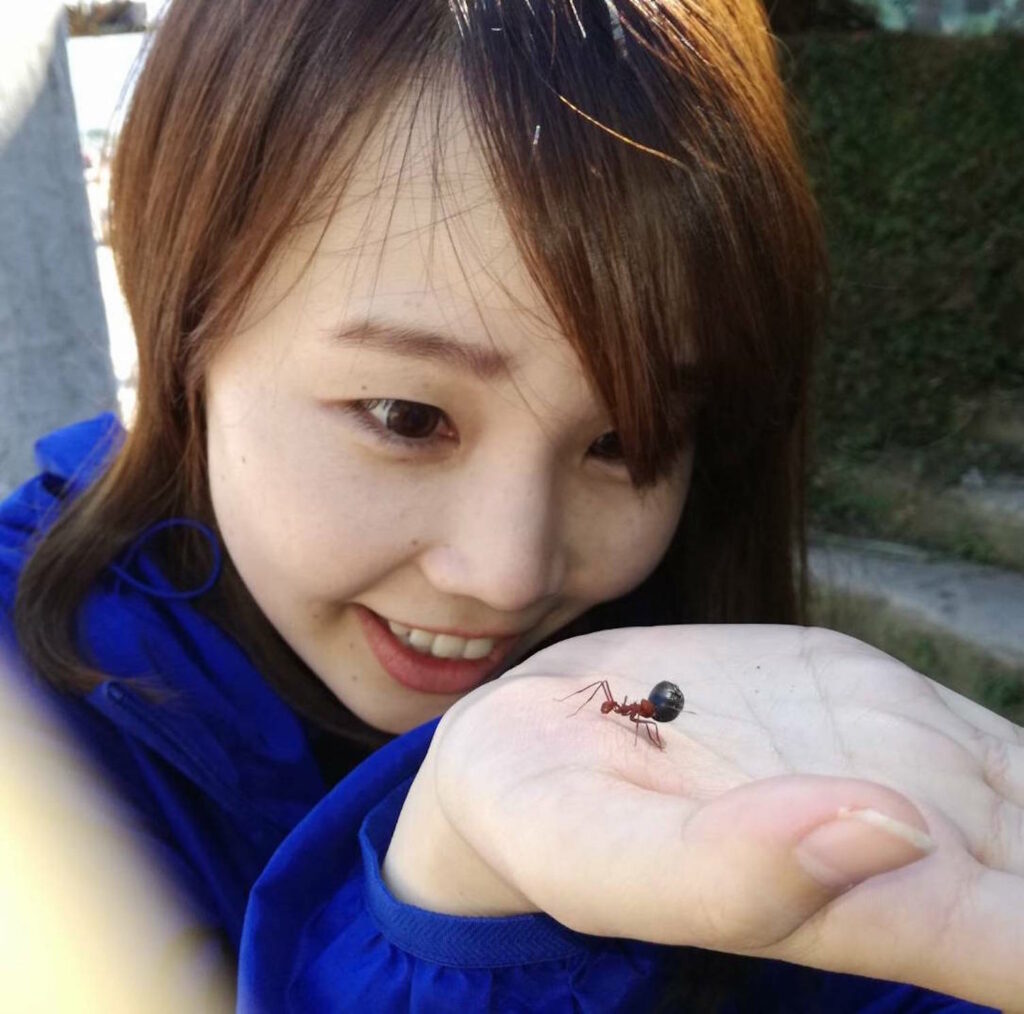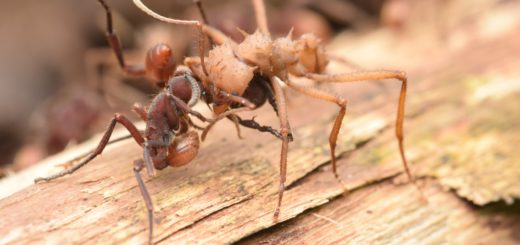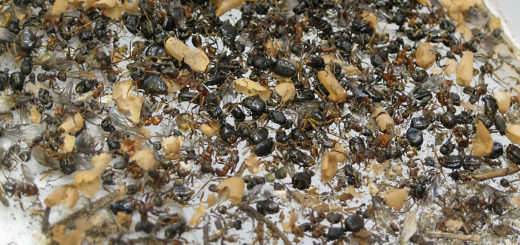Comparing daily activity of five Japanese ant species
Circadian rhythms are ubiquitous to almost all life, and ants are no exception. Many species are run by an internal clock which is adjusted by external light signals, ultimately enabling them to adapt their behavior to the time of day. However, despite this large reliance on circadian rhythms, large knowledge gaps remain. Here, Haruna Fujioka shares some photos and insights from her new study “Comparison of daily activity rhythms in individual workers of five Japanese ant species” published in Myrmecological News, where she and her colleague M. Iwatake investigate the locomotor activity of five species with different life histories.
A Photo Blog Contribution compiled by Haruna Fujioka

Edited by Phil Hönle and Salvatore Brunetti


MNB: Could you briefly outline the research you published in the journal in layperson’s terms?
HF: Daily rhythms are periodic activity patterns of about 24h, and these are ubiquitous in insects, including ants. In our study, we investiged if the around-the-clock activity of ants is related to some morphological or ecological characteristics, such as morphological diversity of workers, feeding and nest habits. To examine this, we measured daily movement patterns of individuals in five Japanese ant species: Camponotus vitiosus (Fig. 2), Formica japonica (Fig. 3, 4), Lasius japonicus, Nylanderia flavipes, and Pristomyrmex punctatus, using a special monitoring system originally developed for Drosophila flies (Drosophila Activity Monitoring (DAM2) system, (Fig. 1).
Ants differed in their daily rhythms under light-dark cycles (12/12 hours), depending on species and age. Interestingly, all ants showed arrhythmic activity under constant dark condition, hinting at the importance of external environmental cues for initiating their cyclic activity. The differences in morphological diversity and feeding habits did not explain their daily activity patterns. However, the nomadic ant Pristomyrmex punctatus exhibited more clear daily rhythms under the light-dark cycle (12/12 hours), compared to the other non-nomadic ants that we looked at. Unexpectedly, we found that Pristomyrmex punctatus foragers displayed bimodal activity peaks, one in the morning and the other in the evening (Fig. 3). In addition, Formica japonica callow workers (< 3 day old) showed clear daily activity rhythms when exposed to a light-dark cycle, which is interesting because the callows have no previous exposure light inside the nest. This is in contrast to previous studies showing that callows of honeybees display arrhythmic activity.
MNB: What is the take-home message of your work?
HF: The causes of why some ants show a daily activity rhythm while others show arrhythmic activity, are still poorly understood. Our study demonstrates large variations in daily activity rhythms in locomotion among five ant species. We show, for the first time, that some of these species display arrhythmic locomotor activities. To reveal the relationship between ecological traits and behavioral rhythms, the accumulation of basic information on individual daily activity rhythms is needed.









Recent Comments